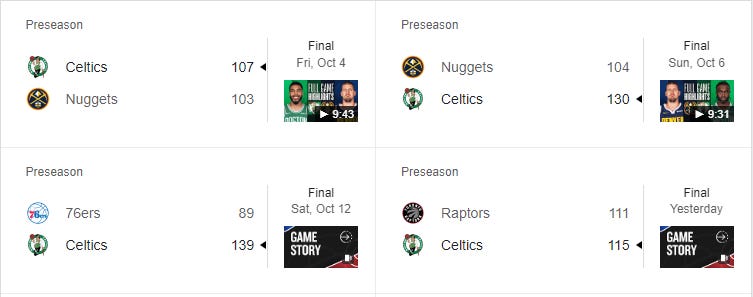Client Services 101: Managing Balance
Life's all about tradeoffs - clients services is no different.
Client services represent an industry based on a professional relationship between agency and client. It seems obvious, but packed in that simple statement are mountains of nuance. Just like relationships between humans, some are wonderful and long-lasting, others are short and passionate, some are merely transactional, and some are downright abusive.
But like real-life relationships, there are tradeoffs and tensions in client services when it comes to agency and client co-existence that need to be managed by both sides. Let’s take a look at the agency side, and what kind of relationships and navigation of tensions can help in your career servicing clients.
Types of Relationships
Client services in the marketing sphere has a few different types of typical agency-client relationships and it’s important to understand which one your agency is in. Looking at the most popular two models will help ground your place in the client service role.
The Agency of Record (AOR): This is probably the most coveted agency-client relationship, as it usually means big bucks (relatively) to the agency and a consolidation of long-term (again, relatively) work that people can be staffed on for a good amount of time. These can last anywhere from a year to decades, though the average is closer to 3-7 years.
These can also be broken up - as a major multinational might have AORs by region (North America vs. Latam) and by discipline (media vs. creative.) The major holding companies like to try to go for global, multi-disciplinary AORs as this allows for a tighter partnership and more efficiencies within a single holdco vs. having crucial client work handoffs occur between holdco agencies that are still technically rivals in the larger ecosystem.
The Project Scope: Even before Marc Pritchard lamented the “archaic Mad Men model” of the AOR scope with agencies, project scopes existed - though typically with smaller clients who couldn’t go all-in on an AOR model. What Pritchard’s comments did was to help usher in a movement of major clients going this route, even if they didn’t have the clout and marketing budgets of P&G.
These engagements are short-lived and usually for a single campaign or aspect of a campaign. They can certainly lead to a larger relationship (and potentially an AOR agreement), especially if a smaller brand experiences large growth, in part thanks to their marketing partner. But they are also often used as loss-leaders to get a foot in the door and under-scoped for the sake of a quick win.
Regardless of which financial and legal structure your agency has with your client, at the end of the day every agency employee has two groups to answer to: their client, and their agency.
Bureaucracy vs. Bureaucracy
If you work at a large client services firm and your client is anything from a small- to medium-sized business and up, you’re really employed by two organizations. The client pays the agency, who, once they take their cut, pays you biweekly (while offering you discounted health insurance if you live in a country that treats healthcare as a money-making exercise, not a human right.) Not to be crude, but you’re basically a prostitute in business casual (with bennies!)
That means that you have to navigate two bureaucracies: the employer whose name shows up on your W-2, and your client’s organization. Oftentimes these interests are aligned - on a well-scoped, well-managed client, your ability to do good work in the allotted weekly time frame while keeping an eye on two corporate matrices shouldn’t be too difficult.
But “should” and reality can be two different things. On a poorly scoped client, or on a poorly managed client (funny how those two things tend to be correlated), you might run into situations where doing what’s best for the client could be at odds with what is best for the agency. This typically comes into play during an “out of scope” request.
Agencies and clients have defined, highly-redlined scopes that outline what the agency will (and will not) do for the client at the agreed-upon fee. Often the client will ask for things outside of this throughout the relationship, and the agency needs to decide if it’s worth doing free work for the sake of the relationship, or if the ask should set in motion a whole other conversation about this new project and how much more it should cost the existing client. These conversations can be fruitful and provide a much-needed service at a proper remuneration for the agency, or they can breed resentment and turn into “scope policing” on future asks and can become acrimonious. It’s a fine line and knowing how to toe it is a crucial skill.
Client vs. Client Business
This tension is a peculiar one, as one would imagine that what is good for the goose (your main client contact) is good for the gander (their company cutting the checks to the agency.)
But that’s not always the case. Politics pervades everyone’s profession and sometimes client contacts will try to paint a rosier picture than actually exists in a report in order to avoid scrutiny from their leaders or to keep a client-side error under wraps. The overwhelming majority of the time these are minor and inconsequential (if even perceptible by the agency team.)
There will be times, however, where this kind of self-preservation becomes harmful to the client’s company at large in favor of keeping an individual or a team looking good in the short-term. Failures are just as valuable as success when it comes to learning lessons from marketing, if not more so.
In life - and this is especially true in the service industry - it’s always key to keep in mind which way the money is flowing, and from where. At the end of the day, the corporation is the one paying the agency, not any individual. So when evaluating the “right thing,” the funding source (i.e. the client’s company) should always be top of mind. This is extremely difficult in an industry that, while seemingly quite large, is actually a lot more insular and relationship-based than it may first appear. Like I tell my toddlers: sometimes the right thing isn’t the easy thing.
Finance vs. Everybody
The marketing world has undergone an incredible transformation since the Mad Men era - that quaint time replete with insane expense accounts, three-martini lunches, and first class travel as far as the eye could see.
Today, it is decidedly not that. Back in the day, agency fees were based on a percentage of the media buy. With television being the main advertising driver - and also the most expensive medium to buy ads in - the money on Madison Ave was good.
Fast forward to 2024: programmatic technology has made media cheaper than ever and the media fee percentage really only exists in smaller engagements or one-off projects. The percentage of media fee evolved into an hourly billable rate for an employee, similar to other client service verticals such as law or consulting.
But clients got wise to this, too. As agencies would burn hot getting projects done, sometimes clients found themselves having to re-up retainer hours before the end of the year (no matter if the agency burning hot was client-driven or merely agency inefficiency.) But when clients did this, it was essentially pure profit for the agency, as they certainly weren’t turning around and handing out more money to their employees when this happened (at least not in this newsletter author’s experience.)
So now we find major players using the FTE model - each agency position has its own cost to it based on a 40-hour (more or less) workweek, with agency overhead (leadership, operational departments, and - ahem - real estate) loaded on top of salary and benefits. Clients pay for the FTE (or a partial allocation of the FTE) and it’s up to the agency to ensure their hours are commensurate with a profitable equation on the books. We could get into how this actually incentivizes agencies to overwork their employees, but that’s a post for a different day.
All of this means that finance needs to keep a keen eye on expenditures. And they do.
Years ago I was working at an agency and looking for the CFO for something to sign off on. Not finding him, I asked our president where he was. I was told at a CFO conference. I replied, somewhat sarcastically, “What do they do there? Sit in a big room and practice telling each other ‘no’?”
While it got a big laugh (my sarcastic remarks usually do [Ed.’s note: Debatable]), it’s the reality of the CFO position: every dollar needs to be scrutinized and needs to ladder into value for the agency. Margins have been declining for generations of agency employees and when you look at which way the money flows, clients get to call the shots. Plus, there’s always the kickup to the holdco if you’re an agency with a parent company.
Relationship Building
At the end of the day, client services (and any job, really) is about relationship building - with your clients, with your agency peers and leadership, with finance. If you can navigate the above tensions and tap into the overlap where both parties are happy, that is where really good, collaborative partnerships take hold - the transactional nature of the professional services kind of just melts away and it becomes closer to a single team working towards a common goal. This is the nirvana state in agency life, and it’s extremely difficult to achieve. But it’s always worth working towards.
Grab Bag Sections
WTF NBA: We talked last year about how the Celtics are primed to go Belichik circa 2007/2008 and simply take zero prisoners when it comes to running up the score. If the pre-season is any indication, it’s going to be a long winter for NBA teams not named the Boston Celtics.
They disrespected Jaylen Brown in ways we don’t have the space to go into without running into email length notifications from Substack. They didn’t play Tatum in the Olympics. And Brad Stevens continued to look like a GM playing in another dimension as he didn’t lose a single star in the off-season and locked up key core players for multiple years.
They haven’t lost a pre-season game and they subjected Denver to an absolute shellacking (+26 win) and laughed Philly out of the building (+50) - and these are supposed to be two powerhouse teams in the league.
Sure, the pre-season means nothing. But this newsletter thinks it’s a harbinger for the regular season more than it has been historically, at least when it comes to the Celtics (and Bronny.)
Album of the Week: Thanks to a newsletter reader's suggestion (yes, we take requests), this week we're diving into Boston-area native Statik Selektah's 2014 studio album What Goes Around.
Akin to other DJ albums, this one is set up with the beats and the DJ as the star and all of the other artists as features. It’s a real sweet spot of what could be considered foundational hip hop to elder millenials like myself.
Some of the highlights are “Carry On” where Joey Bada$$ is his usual excellent self, but Freddie Gibbs (who this newsletter can take or leave, if we’re being honest) is rapping like the rent is due. Action Bronson features well on the album (“The Imperial” and “Long Time”) with classic lines like “It’s the rap Scott Disick.” Those looking for some old school New York grit will find it on “The Thrill is Back” (Styles P and Kweli), and “Down Like This” (Sheek Louch and Pharoahe Monch.) The album ends on a very well-done sample of the Beach Boys’s “God Only Knows” featuring Bun B, Jared Evan, and Pos from De La Soul.
If you’re into rap over solid beats, this is a very good album to have in the rotation. The fact that Statik Selektah is Boston-adjacent simply makes it that much better.
Quote of the Week: “Balling ain’t the only think I know.” - Jaylen Brown, in an ill-advised foray into the rap game











